[ベスト] e flat major scale finger position piano right hand 231656-E flat major scale finger position piano left hand
General Arpeggio Fingering Rules The fingering pattern repeats every three notes, so that every octave has the same fingering The thumb always stays on the white keys, except when there are no white keys (F♯/G♭ major and D♯/E♭ minor) The fifth finger is only used at a starting place, a stopping place, or a turningaround placeThe fingering given in the C major example is similar in the keys of D, E, F, G, A, and B For the E flat and B flat scales the fingering is the same as that given belowYour next finger goes on fret 5 of the 4th string Put your pinky on string 5 fret 6, and don't play the 6th string Another easy barre C#m guitar chord E Flat on the 4th Fret If you've mastered playing E Flat on the 3rd fret, you can start expanding your skills by incorporating E Flat on both the 4th and 5th fret

Major Scales How To Play B Major Scale Two Octaves On Piano Right And Left Hand Youtube
E flat major scale finger position piano left hand
E flat major scale finger position piano left hand-The most common scales when playing the piano, are Major and Minor scales From each key on the piano you can start either a major or a minor scale All scales are made with a specific pattern of whole steps (tones) and half steps (semitones) All 12 major scales share the same pattern of whole and half steps between the notesThe E flat major scale is a scale typically introduced within the first or second year of learning piano This could vary, of course, depending on how quickly a student progresses and the type of curriculum the piano instructor chooses to follow


Violin Viola Piano 3 Octave Fingerings Beststudentviolins Com
According to this rule, the scales of E flat and A flat would begin with the second finger, while the scale of B flat would begin with the third These scales may, however, begin with the third finger in the right hand Note to the teacher about piano scale fingering These rules have been introduced as a guide for your pupil, and an aid to yourselfThe numbers above the notes on the treble staff are typically for the right hand and numbers about the notes on the bass staffFlat keys > 1 flat – F Major > 1 flat – D minor > 2 flats – Bflat Major > 2 flats – G minor > 3 flats – Eflat Major
Theory The Db major chord is constructed with a root The lowest note in the chord, a major third An interval consisting of four semitones, the 3rd scale degree and a perfect fifth An interval consisting of seven semitones, the 5th scale degree Fingerings Little finger, middle finger, thumb (left hand);No sharps or flats Eflat Major > 3 flats – C minor36 1 Jpg Jpeg Image 1475 730 Pixels Learn Piano Piano Exercises Blues Piano Image Of Free Color Coded Guitar Sheet Music For The G Major And E Minor Music Scales Violin Sheet Music Violin Piano Music Image Of Color Coded Viola Sheet Music For The F Major And D Minor Music Scales Guitar Scales Beginner Guitar Scales Violin Scales Pin On
While on the left hand, you'd cross over with your third finger at E)This fingering can be used for all major and minor chords on the keyboard regardless of whether they have black keys or not Right Hand The same fingering reversed can be used for playing this chord with the right hand, 135The same fingering can be used for playing all major and minor chords Right Hand The same fingering reversed can be used for playing C major chord with the right hand, 135 So in this case the thumb goes on C, the middle finger on E and pinky on G The same reversed fingering can be used for playing all major and minor chords



Melodics Melodics Support



F Major Scale On Piano Correct Fingers Notes And How To Play It Dubai Khalifa
The most common scales when playing the piano, are Major and Minor scales From each key on the piano you can start either a major or a minor scale All scales are made with a specific pattern of whole steps (tones) and half steps (semitones) All 12 major scales share the same pattern of whole and half steps between the notesThe same fingering can be used for playing all major and minor chords Right Hand The same fingering reversed can be used for playing C major chord with the right hand, 135 So in this case the thumb goes on C, the middle finger on E and pinky on G The same reversed fingering can be used for playing all major and minor chordsEach of the Piano Scales CGDAEB and F Sharp Major are represented below in the Circle of Fifths Diagram These particular scales are the sharps scales and will always be found at the same place on the circle as you begin with C which is located at the top and progress to the right after that
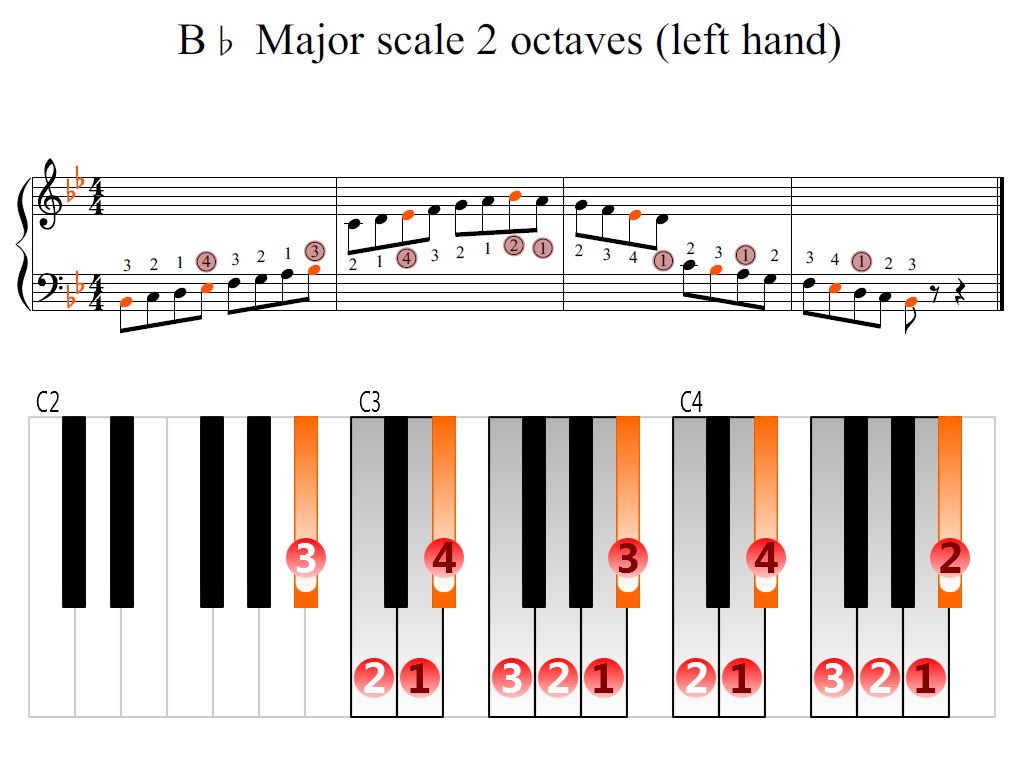


B Flat Major Scale 2 Octaves Left Hand Piano Fingering Figures



Major Scales Fingering Chart Teaching Children Music
Thumb, middle finger, little finger* The tonic note of a scale is the note that the scale is named after, ie the 'A' notes in an A major scale, or the 'C' notes in a C major scale Major Scale For Bass TAB The first section of the page shows to how to play a major scale with a number of commonlyused tonic notes in open positionThe fingering is the same premise for all scales, with the crossing over being the same on each hand, just on different notes (ie, the G Major Scale starts on G, so you'd cross over on the right hand with your thumb at C going up the scale;



Major Scales



3 Ways To Place Your Fingers Properly On Piano Keys Wikihow
> 4 sharps – E Major > 4 sharps – Csharp minor > 5 sharps – B Major > 5 sharps – Gsharp minor > 6 sharps – Fsharp Major > 6 sharps – Dsharp minor > 7 sharps – Csharp Major > 7 sharps – Asharp minor;Piano fingering for the left hand is similar to right hand fingering, as indicated in these basic rules Fingers are numbered 1–5 ;For pianists, start with just one octave and master the fingering and the notes for each scale, hand separately, and then hands together Practice slowly, using a metronome to help establish a steady tempo Only go faster as the fingerings and notes become easy and flow naturally Once you have mastered the major scales in single octave scales
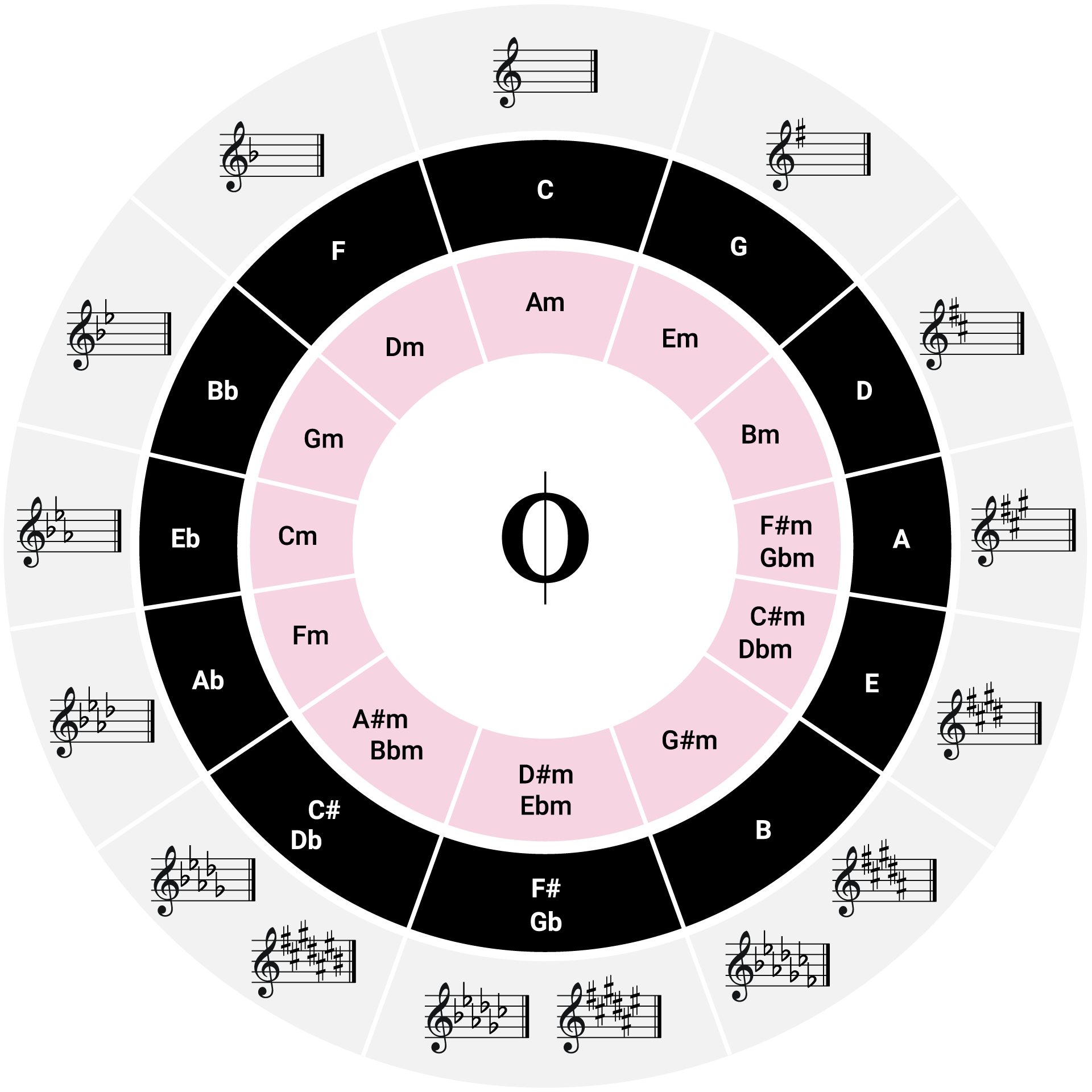


All Major And Minor Scales Including Fingering For Piano Oktav


Major Scale Fingering Piano
The augmented second in harmonic minor scales must fit conveniently under the hand (preferably between 1 and 2 or 2 and 3, except for the left hand of E♭/D♯ minor) When working out scale passages in real music, consider alternatives that align the fingering patterns between the hands For example, try to make both thumbs play togetherThe E flat major scale is a scale typically introduced within the first or second year of learning piano This could vary, of course, depending on how quickly a student progresses and the type of curriculum the piano instructor chooses to followFingering this scale Left Hand 5, 4, 3, 2, 1, 3, 2, 1 Right Hand 1, 2, 3, 1, 2, 3, 4, 5 Follow the above pattern based on the image given above Please note that lefthanded and righthanded have different representations About
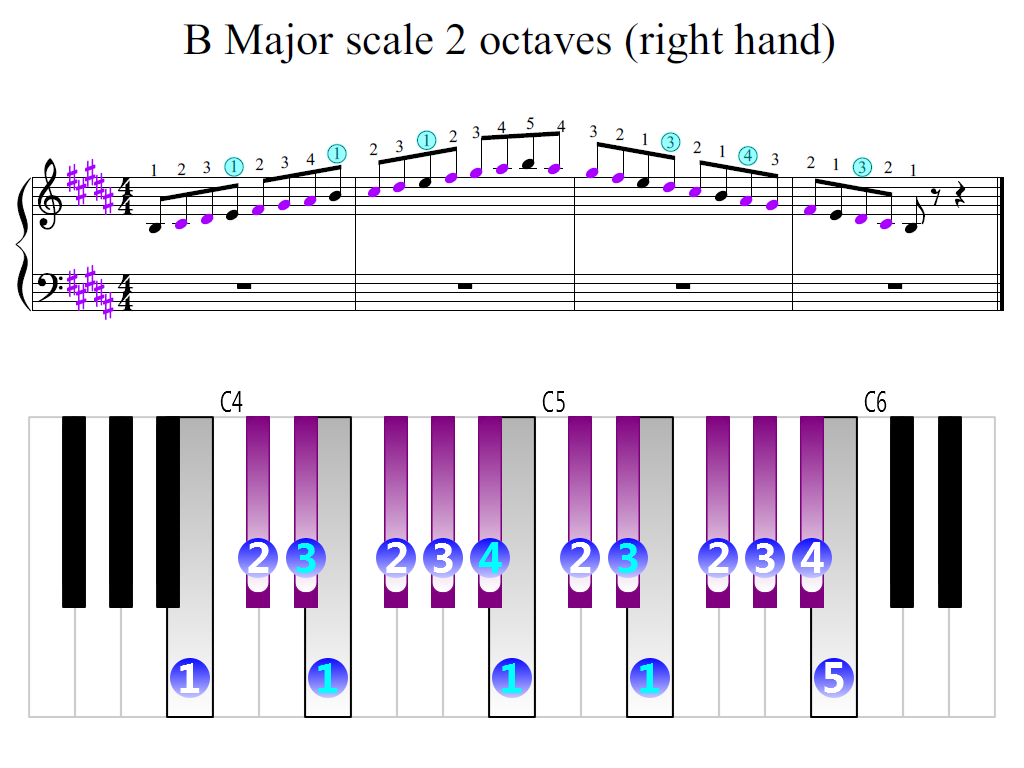


B Major Scale 2 Octaves Right Hand Piano Fingering Figures



12 Major Scales Free Download For Piano Chords Arpeggios And Scales
The thumb is always 1 , and the little finger is 5 Fingers 1 and 5 should be kept off accidentals whenever possibleThe thumb is always 1 , and the little finger is 5 Fingers 1 and 5 should be kept off accidentals whenever possibleFlat keys > 1 flat – F Major > 1 flat – D minor > 2 flats – Bflat Major > 2 flats – G minor > 3 flats – Eflat Major



Survival Of The Fittest A Reevaluation Of Traditional Scale And Arpeggio Fingerings Piano Magazine



G Major Scale Piano Fingerings Page 1 Line 17qq Com
Fingering For All Twelve Major Scales Two Octaves C has no sharps or flats E flat has three flats and they are B, E, A Note B, D flat and G flat have enharmonic equivalents Jazz Piano class – RH only up and down one octave Private Students – Both hands up and down two octavesImplement The Correct Finger Pattern For Each Scale For the most part, every scale you play will follow the same finger pattern For the right hand going up, that's usually 1,2,3,1,2,3,4,5 The lefthand fingering is typically a mirror image of the right hand, so the fingering would be 5,4,3,2,1,3,2,1Twitter Facebook Pocket Piano Fingering Figures Piano Fingering Figures Home Sharp keys 4 sharps E Major Sponsored links Menu Home;


The B Flat Major Scale How To Play Form
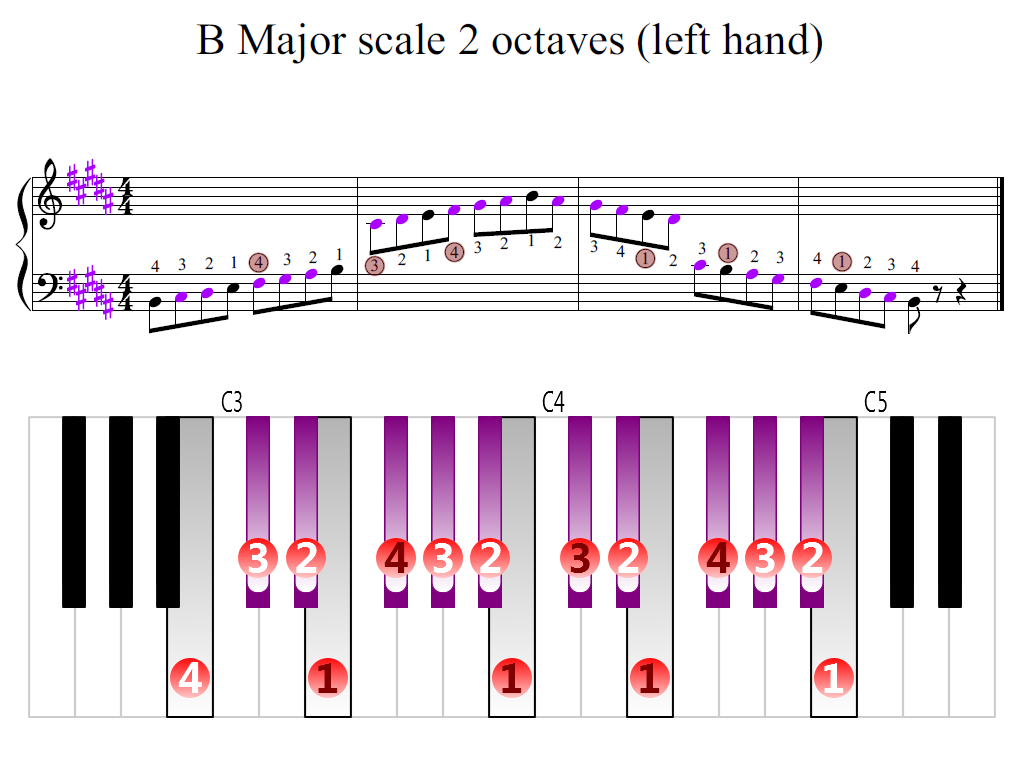


B Major Scale 2 Octaves Left Hand Piano Fingering Figures
Basic Piano Fingerings for the 12 Major Scales Tania Gleaves on October 9, 15 H ere are the piano fingerings for all twelve major scales, in circle of fifths order The numbers correspond to the fingers of the left hands (LH) and right hands (RH) Click Here And Learn Basic Piano Fingerings Fast!This key signature has three flats The flat before the last one is Eb That is the key;The fingering is the same premise for all scales, with the crossing over being the same on each hand, just on different notes (ie, the G Major Scale starts on G, so you'd cross over on the right hand with your thumb at C going up the scale;


Chiff And Fipple Forums View Topic B Flat Fingering


G Major Scale Piano Finger Position Shakal Blog
The augmented second in harmonic minor scales must fit conveniently under the hand (preferably between 1 and 2 or 2 and 3, except for the left hand of E♭/D♯ minor) When working out scale passages in real music, consider alternatives that align the fingering patterns between the hands For example, try to make both thumbs play togetherE Flat Study and play the E Flat Major scale Say the pattern of steps as you play Right hand fingering 2, (thumb under) 1,2,3,4, (thumb under) 1,2,3 Left hand fingering 3,2,1 (fourth finger over) 4,3,2,1 (third finger over) 3Start by playing fingers 1, 2, 3 in order, then drop your right shoulder so your thumb can play the next white key up without having to go completely under the 3rd finger, and shift your hand up Then you just play fingers 15 in order


The E Major Scale



Fingering C Major Arpeggio Is Fingering Crucial When Learning Piano Basics Music Practice Theory Stack Exchange
According to this rule, the scales of E flat and A flat would begin with the second finger, while the scale of B flat would begin with the third These scales may, however, begin with the third finger in the right hand Note to the teacher about piano scale fingering These rules have been introduced as a guide for your pupil, and an aid to yourselfWhile on the left hand, you'd cross over with your third finger at E)For Ab Major Start with the third finger on the right hand, third finger on the left Play the C with your thumb, then cross over for the Db Ab minor This has the same key signature as B Major, so you can use the same fingering
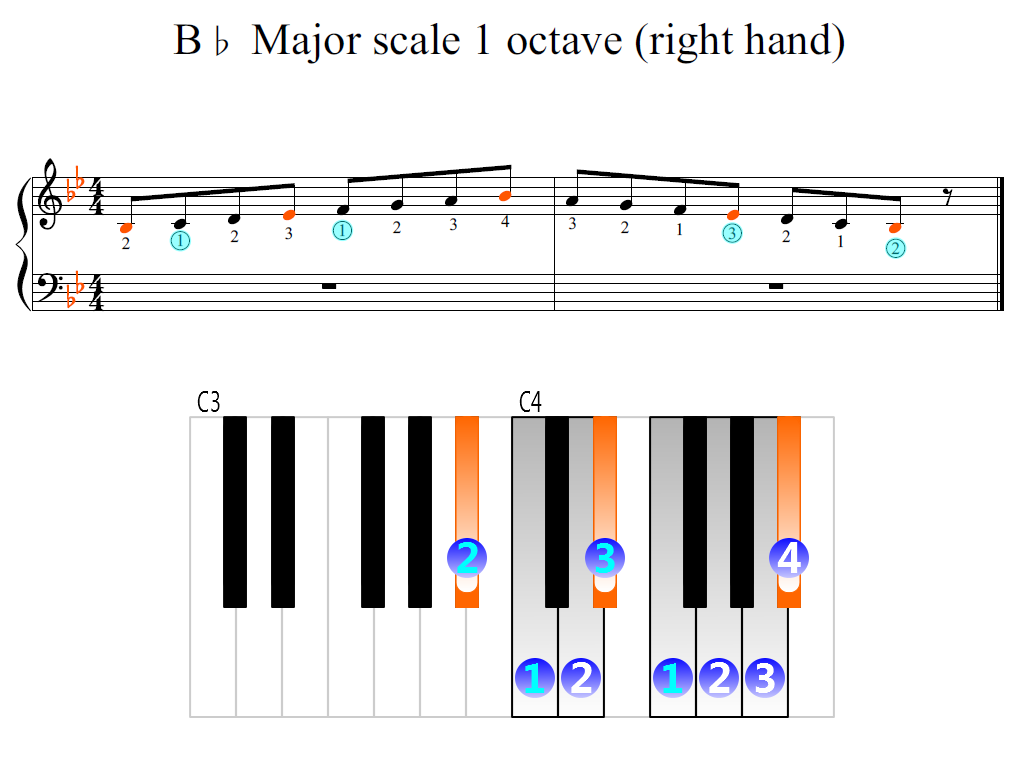


B Flat Major Scale 1 Octave Right Hand Piano Fingering Figures



E Flat Major Scale Fingering Piano Youtube
Piano Fingering for Eb Major Scale The fingering for the E flat major scale on piano is unique for both the right hand and left hand By this I mean it's not a standard scale fingering So each one should be learned on it's own in the beginning before trying to play hands together (Get that muscle memory down!)Each of the Piano Scales CGDAEB and F Sharp Major are represented below in the Circle of Fifths Diagram These particular scales are the sharps scales and will always be found at the same place on the circle as you begin with C which is located at the top and progress to the right after thatThe five major flat keys always start with the right hand 2/3 on Db/Eb when starting the Db or Eb scales Likewise, always start with the right hand 2/3/4 on Gb/Ab/ when starting the Gb, Ab and scales Left hand always starts with 3 on the five major flat keys, except for Gb


Q Tbn And9gctxnpsqxnvatfsw8oblol65tfyl7gb4mdsmtqqxvyc05oihbk E Usqp Cau


Q Tbn And9gcshape9c Obdwvr8vziepkr7vi2rearzjacn71hgrd3j3wnsjm2 Usqp Cau
For Ab Major Start with the third finger on the right hand, third finger on the left Play the C with your thumb, then cross over for the Db Ab minor This has the same key signature as B Major, so you can use the same fingeringHere are the correct fingerings for all 15 major scales for the piano They are written out for both Right Hand and Left Hand These are only written for one octave, so if you want to go more than one octave you simply start over with the same fingering starting again on the root of the 2nd octaveThey are E flat, F, G, A flat, B flat, C, D, and the E flat octave Now let me show you the proper fingering for the scale The right hand starts off on the second finger From there bring your thumb under to hit the F Hit the G with your second finger and continue finger by finger until the fourth finger hits the B flat Finish the scale with
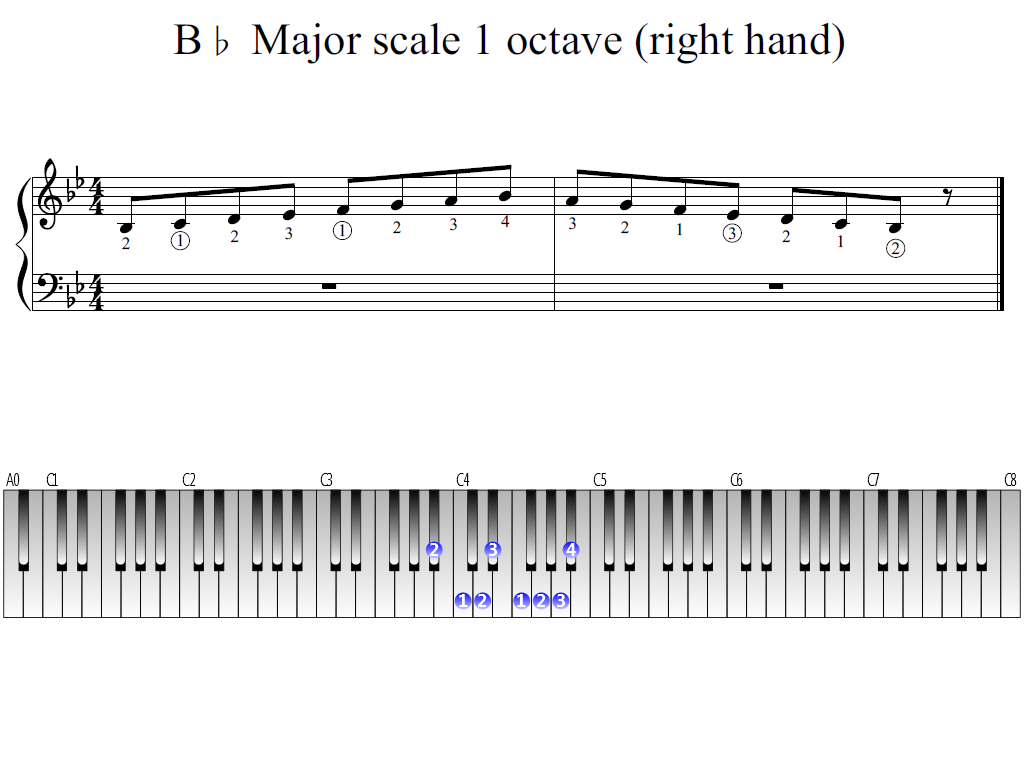


B Flat Major Scale 1 Octave Right Hand Piano Fingering Figures



All Major And Minor Scales Including Fingering For Piano Oktav
Fingerings (LH) 3, 2, 1, 4, 3, 2, 1, 3 Fingerings (RH) 3, 1, 2, 3, 4, 1, 2, 3 The finger numbers are as follows Thumb 1, index finger 2, middle finger 3, ring finger 4, pinky (little) finger 5 Now that we know the notes of the E flat major scale, let's learn the triad chords in this scale/key and their notesE Major scale 2 octaves (right hand) Sponsored links 1 >> Next 1 octave (left hand) Sponsored links Share?Let's start with the right hand When going up the Cmaj scale, your thumb plays C, 2nd finger plays D and third finger plays E Then you continue with the thumb which plays F, 2nd finger plays G, 3rd finger plays A, 4th finger plays B and 5th finger plays C When going up the scale, to play F with your thumb put your thumb under your 3rd finger


How To Play C Major Scale On Piano Keyboard Piano Keyboard Guide Com



Ppp1 Playing Major Scales With One Hand Piano Parent Podcast
Learn how to play D Major scale on piano D Major D, E, F#, G, A, B, c#, D, Major ScalesPiano scales lay the foundation for a pianist's keyboard skills aAs you can see in this fingering chart you can clearly see each note with its fingering and all the fingers you have to put in In addition, it is ordered in the order of the major scale upwards so that you can play the C major scale correctly> 4 sharps – E Major > 4 sharps – Csharp minor > 5 sharps – B Major > 5 sharps – Gsharp minor > 6 sharps – Fsharp Major > 6 sharps – Dsharp minor > 7 sharps – Csharp Major > 7 sharps – Asharp minor;
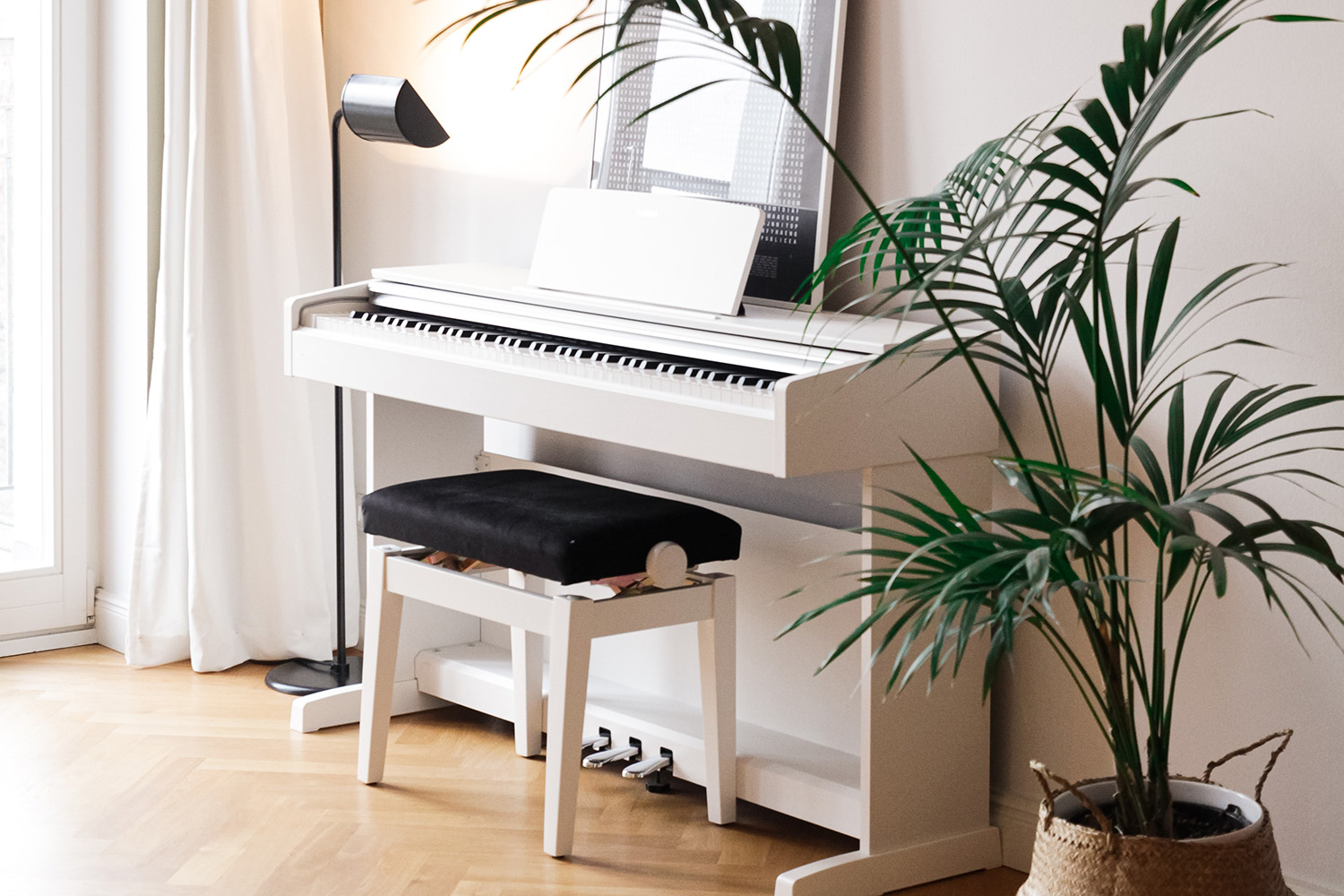


All Major And Minor Scales Including Fingering For Piano Oktav



Pin On Piano
Likewise, always start with the right hand 2/3/4 on Gb/Ab/ when starting the Gb, Ab and scales Left hand always starts with 3 on the five major flat keys, except for Gb B, Db and Gb scales all have the same finger numbers on the same black keys for both handsE Major Scale B Major Scale F Major Scale Major Scale Eb Major Scale Ab Major Scale Db Major Scale Gb Major Scale Comments These scales are for the left hand In addition, you should of course exercise scales with your right hand, but in that case you use some other fingerings More exercises These are additional lefthand exercisesAbove the notes there are numbers representing the fingers on the right hand The first sequence is and it involves a movement with the thumb going under the index and middle fingers After you reach the next octave you turn around and this time it is the other way around you move your middle and index finger over the thumb ()



Piano Chords For Beginners School Of Rock



How To Play All Major Scales On The Piano With Fingerings 4 Steps Instructables
Piano fingering for the left hand is similar to right hand fingering, as indicated in these basic rules Fingers are numbered 1–5 ;The D side key is pressed with the palm of your hand right below your index finger The Eb key is pressed with your index finger The F key is pressed with your 3rd finger Bottom Notes (right hand) The key marked 4 is for your index finger The key marked 5 is for your middle finger The key marked 6 is for your 3rd fingerScales and arpeggios techniques for pianists Now that we know why we need to practice scales and arpeggios and what they are, let's talk about how to practice them, starting with the thumb crossing technique, which allows us to navigate the keyboard with only 5 fingers (in each hand) and to connect notes without hopping from one note to another It's a way of shifting position without


Epianostudio Piano Lessons Music Theory Sheet Music Etc Part 2
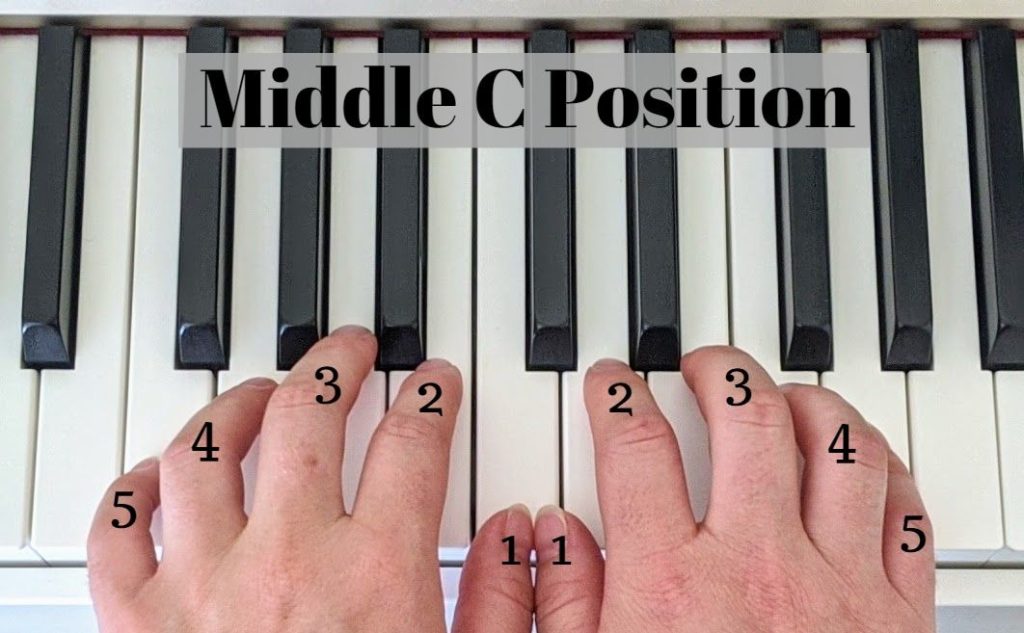


Hand Position On The Piano Where And How To Do It Correctly Pianotels Com
36 1 Jpg Jpeg Image 1475 730 Pixels Learn Piano Piano Exercises Blues Piano Image Of Free Color Coded Guitar Sheet Music For The G Major And E Minor Music Scales Violin Sheet Music Violin Piano Music Image Of Color Coded Viola Sheet Music For The F Major And D Minor Music Scales Guitar Scales Beginner Guitar Scales Violin Scales Pin OnThe most common scales when playing the piano, are Major and Minor scales From each key on the piano you can start either a major or a minor scale All scales are made with a specific pattern of whole steps (tones) and half steps (semitones) All 12 major scales share the same pattern of whole and half steps between the notesIn the B major scale, thumbs play the B and the E, 23 go on C#D#, respectively, and 234 go on F#G#A#, respectively This is the most natural position for the hand One does not have to negotiate moving the hand forwards and backwards to adjust for changing finger lengths



B Flat Major Scale Fingering Piano Youtube



Survival Of The Fittest A Reevaluation Of Traditional Scale And Arpeggio Fingerings Piano Magazine



Image Of Free Color Coded Violin Sheet Music For The E Flat Major And C Minor Music Scales Violin Lessons Learning Violin Lessons Violin
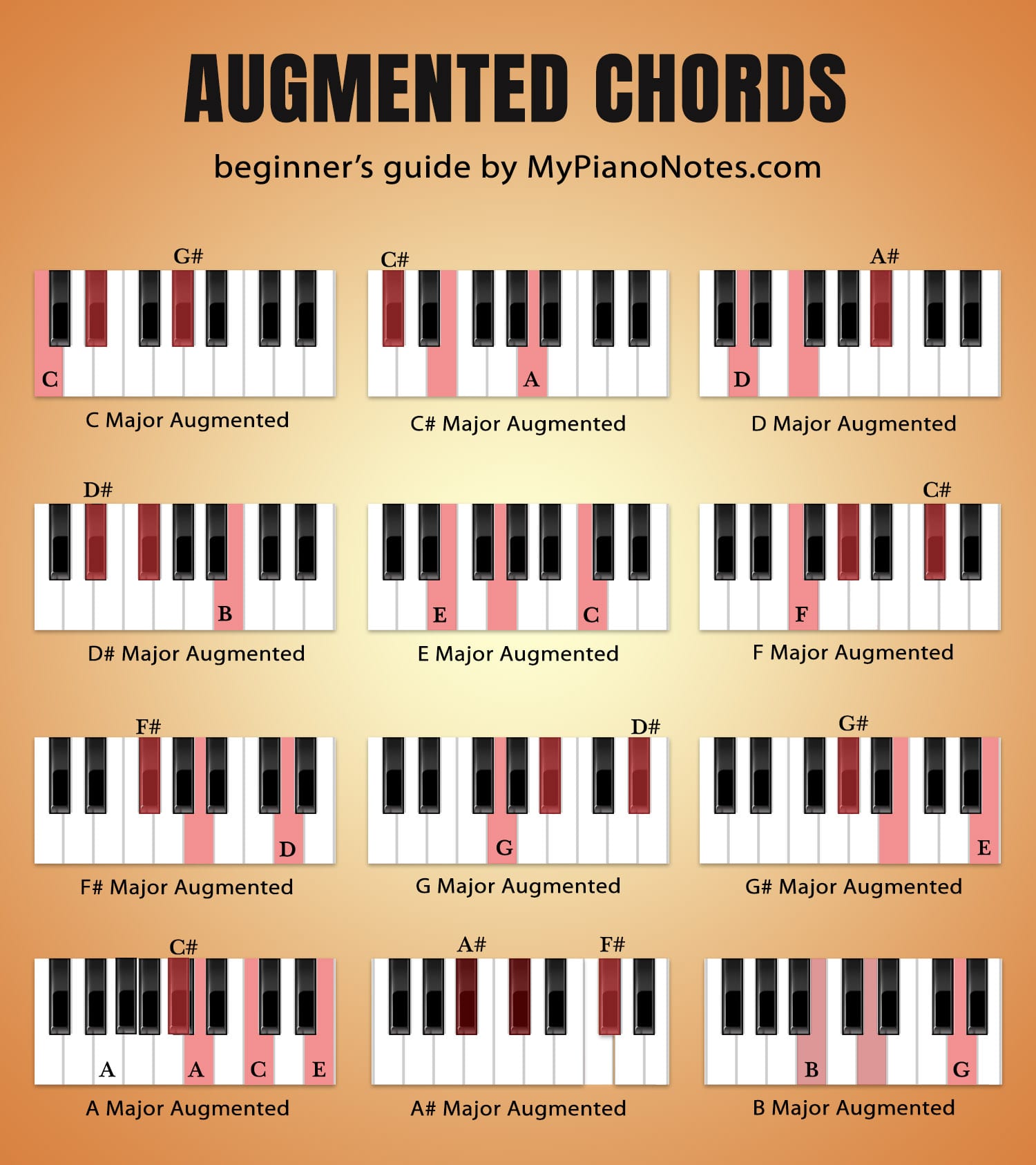


Piano Chords Ultimate Guide For Beginners



Understanding Piano Scales Major Minor And Blues Scales Updated 21



G Major Scale Piano Finger Position 2 Octaves Shakal Blog



Playing Piano With Your Left Hand Too Dummies


Jazclass Piano Technique 4 Scales 1



Grade 2 Scales And Arpeggios My Piano Teacher



Piano Lessons E Flat Major Scale Right Left Hand Youtube



How To Play Left Hand Scales On The Piano Or Keyboard Dummies



Survival Of The Fittest A Reevaluation Of Traditional Scale And Arpeggio Fingerings Piano Magazine
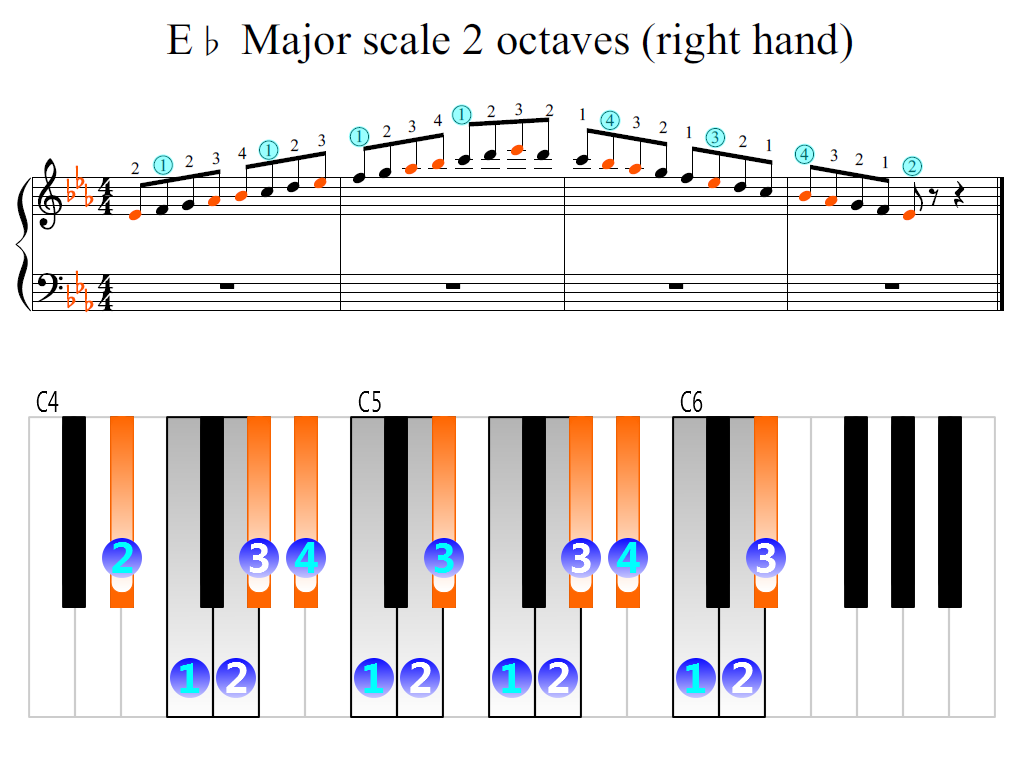


E Flat Major Scale 2 Octaves Right Hand Piano Fingering Figures



Piano Fingering



Major Scales



Major Scales How To Play B Major Scale Two Octaves On Piano Right And Left Hand Youtube


Learn Major Scales Piano Treble Clef Charts Pattern Formula Chords Music Theory


Jazclass Piano Technique 4 Scales 1
/L1_bass_reading1a-56a72ed73df78cf772931b53.jpg)


Piano Fingering For The Left Hand



Piano Music Scales


The 12 Major Scales



Free Piano Scale Fingering Diagrams Music Matters Blog
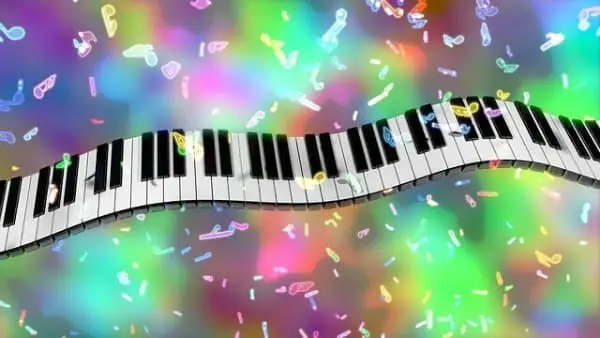


Piano Scale Charts For All 12 Major Scales
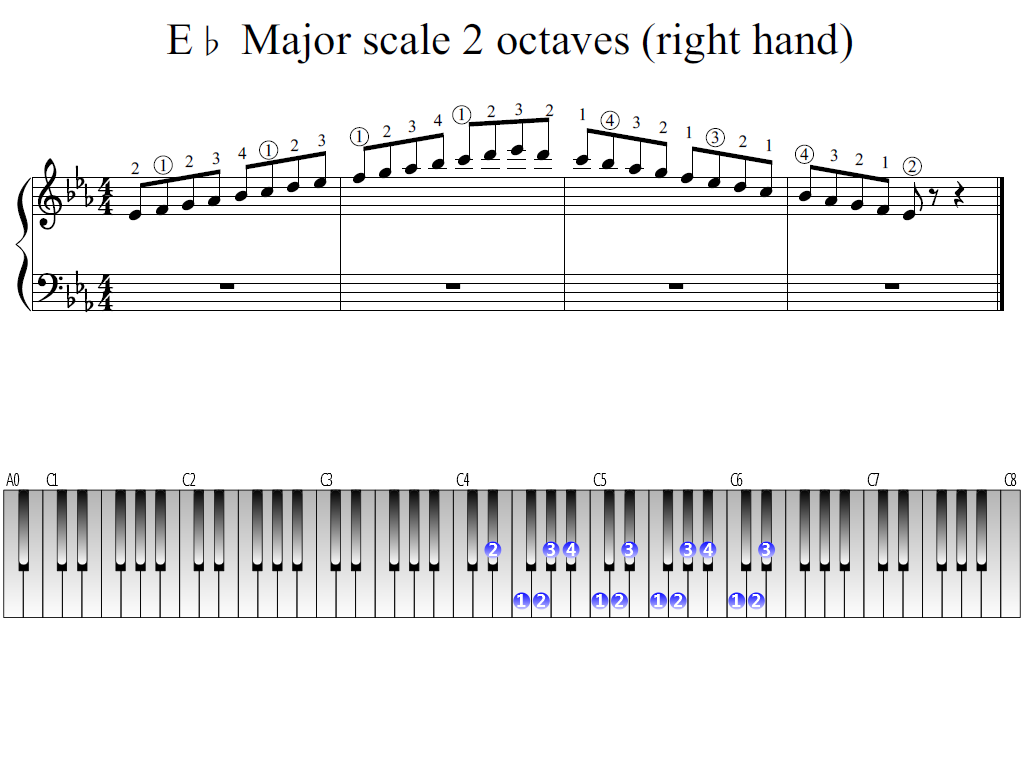


E Flat Major Scale 2 Octaves Right Hand Piano Fingering Figures


A Flat Major Chord And Scale On Piano How To Form Ab Major Chord


Violin Viola Piano 3 Octave Fingerings Beststudentviolins Com


G Major Scale Piano


Class Piano In Class Piano On Digital Publishing At Indiana University Press
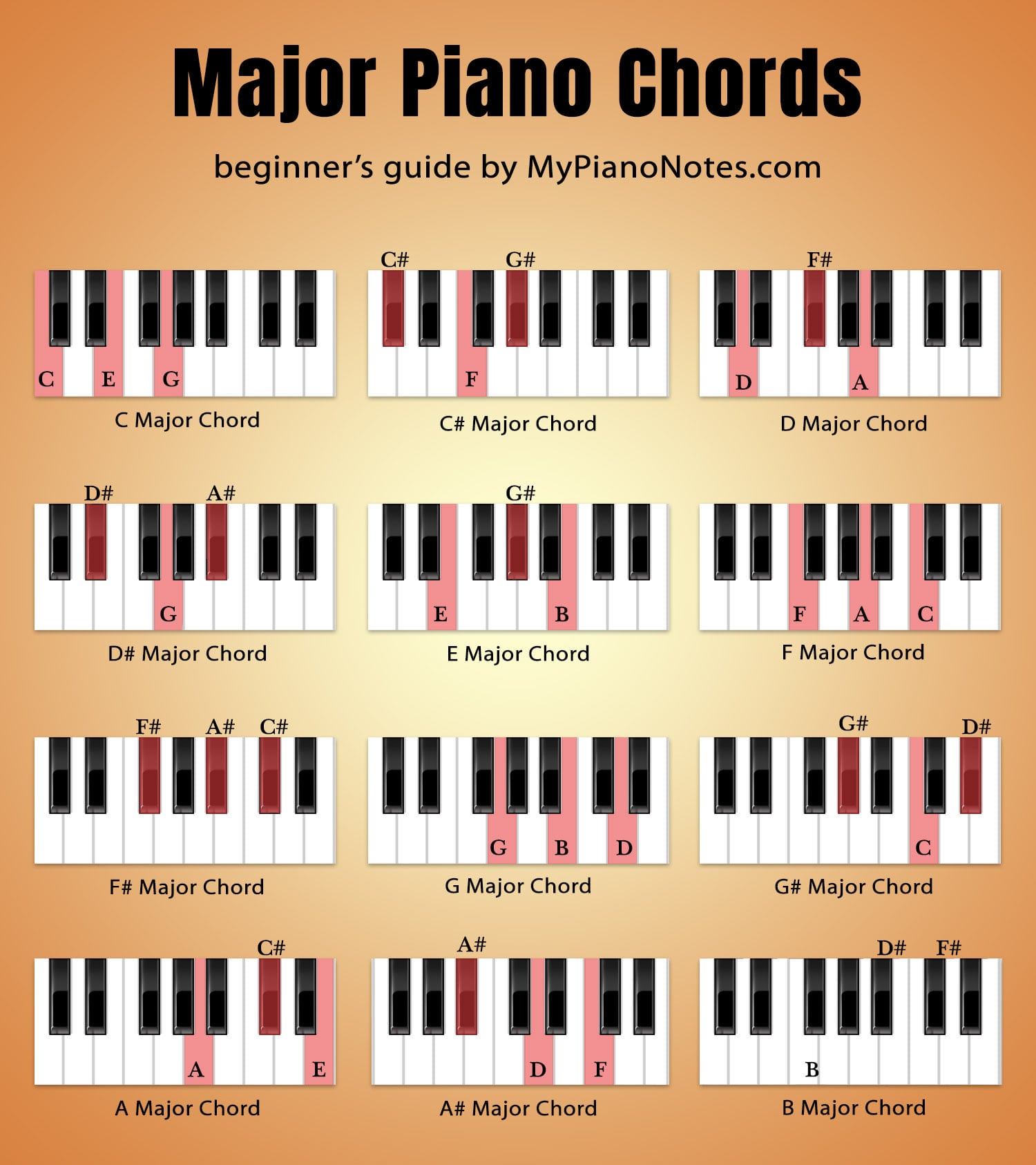


Piano Chords Ultimate Guide For Beginners



Eb Major Scale Fingerings Youtube
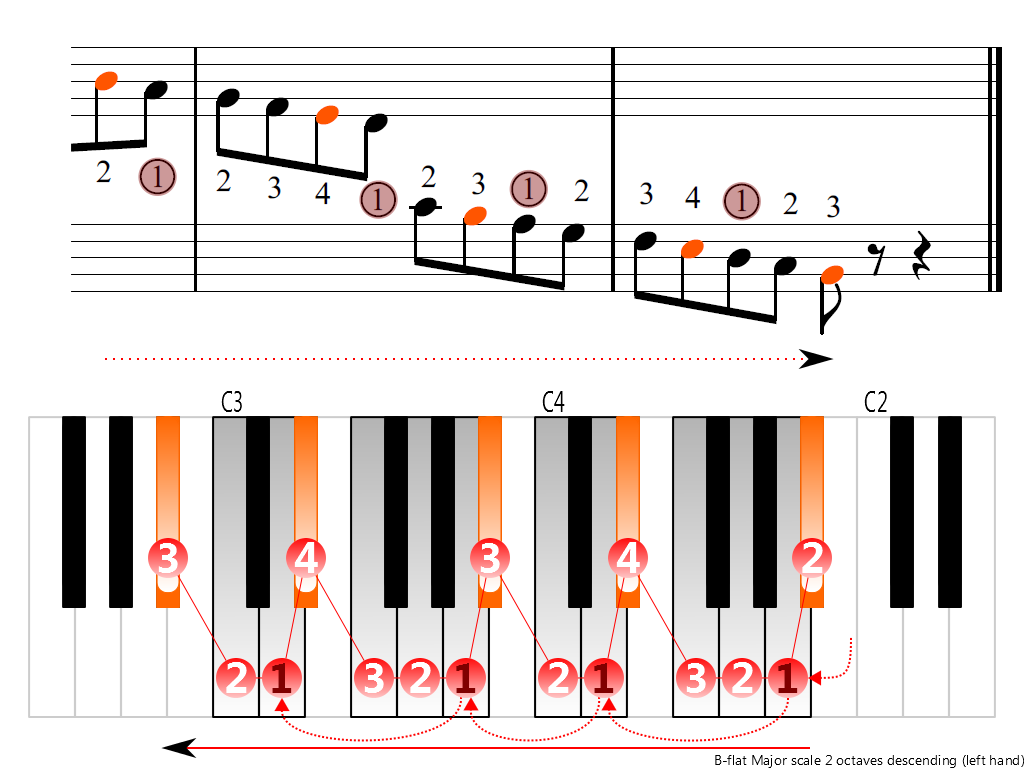


B Flat Major Scale 2 Octaves Left Hand Piano Fingering Figures



Left Hand Scales On The Piano Dummies



Eb E Flat Major Scale Piano Tutorial Right Left Hand Fingering Chord Triads On The Scale Youtube



Major Scale Fingering Hear And Play Music Learning Center



E Flat Major Scale On Piano Notes Fingering How To


Jazclass Piano Technique 4 Scales 1
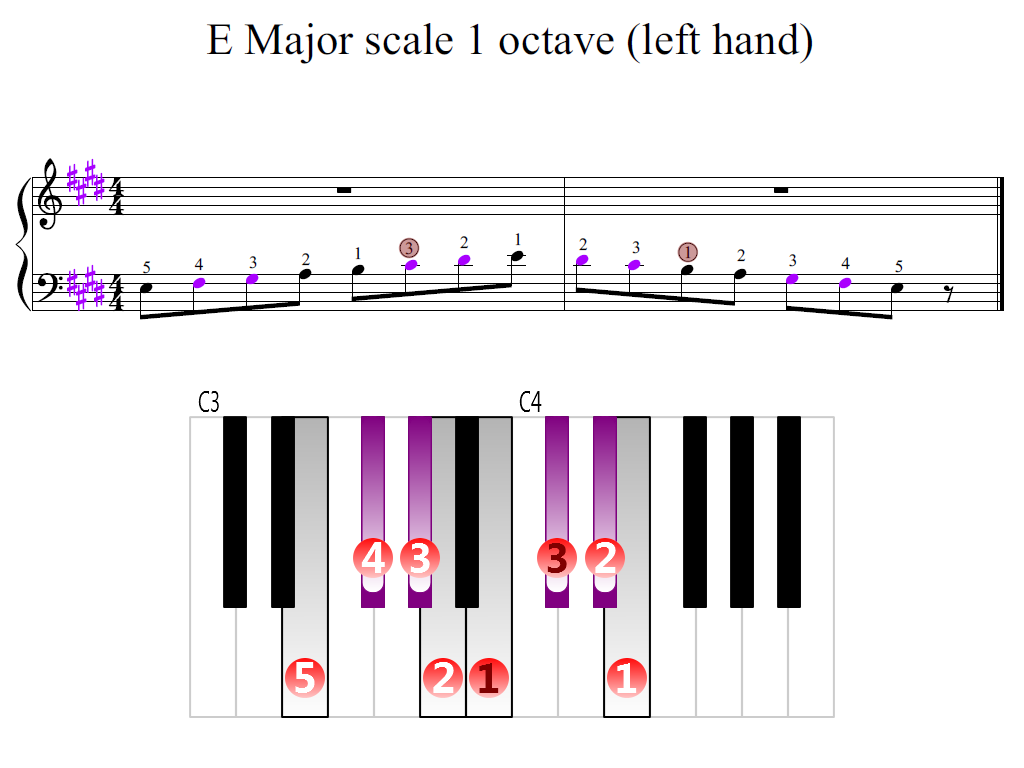


D Major Scale
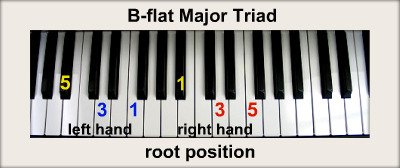


Piano Chord Chart Major Minor Triads



Piano Scales Exercises For Left Hand
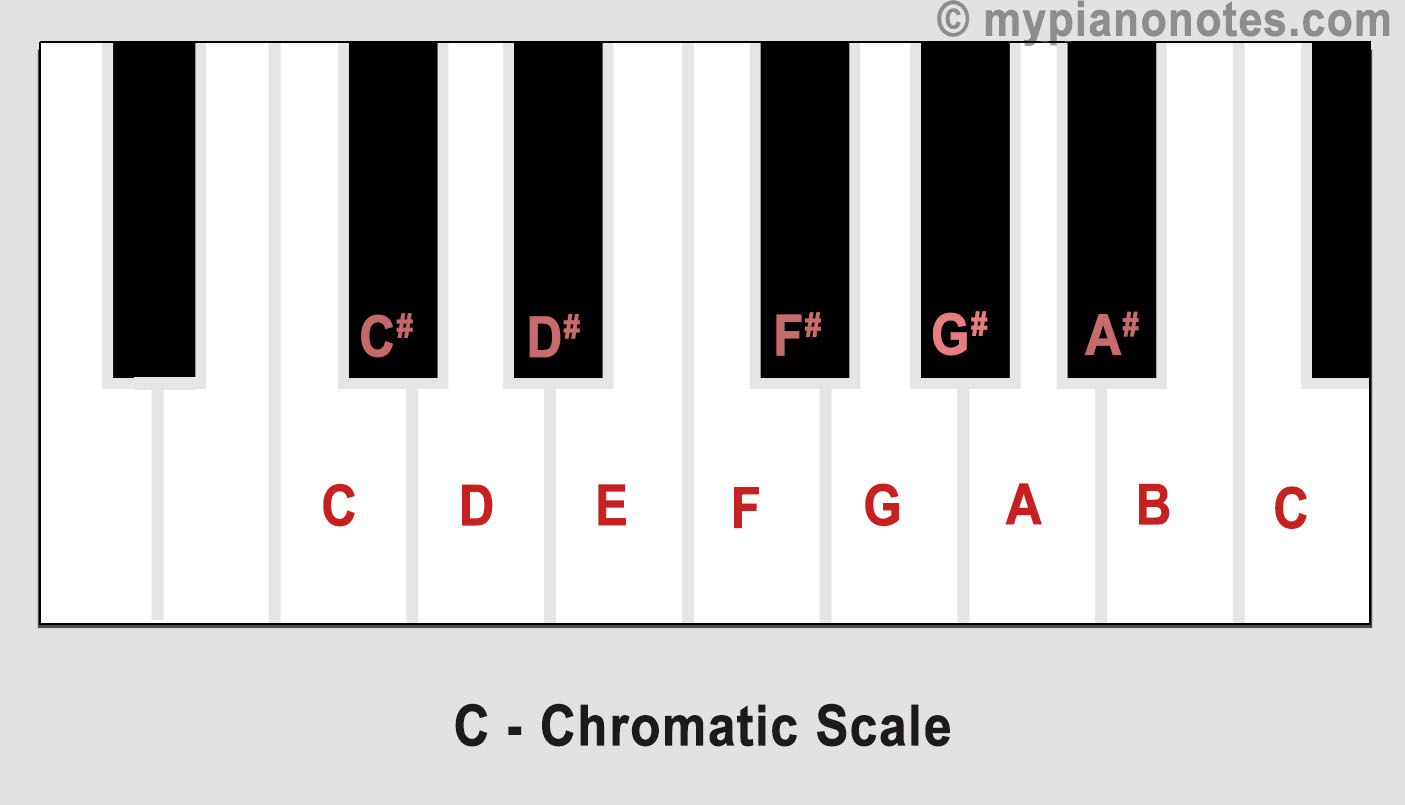


Piano Scales Complete Guide With Examples
:max_bytes(150000):strip_icc()/Piano-Scale-Fingering_06-56a72f045f9b58b7d0e7ab10.png)


Ascending Piano Scales Piano Finger Techniques



Here S The Fingering For All 12 Major Scales Hear And Play Music Learning Center



Triads For Jazz Piano Pianogroove Com


The E Flat Major Scale On Piano Treble And Bass Clef



Piano Finger Chart Png 400 540 Piano Chords Chart Keyboard Lessons Learn Piano



Major Scale Fingering Hear And Play Music Learning Center



Survival Of The Fittest A Reevaluation Of Traditional Scale And Arpeggio Fingerings Piano Magazine
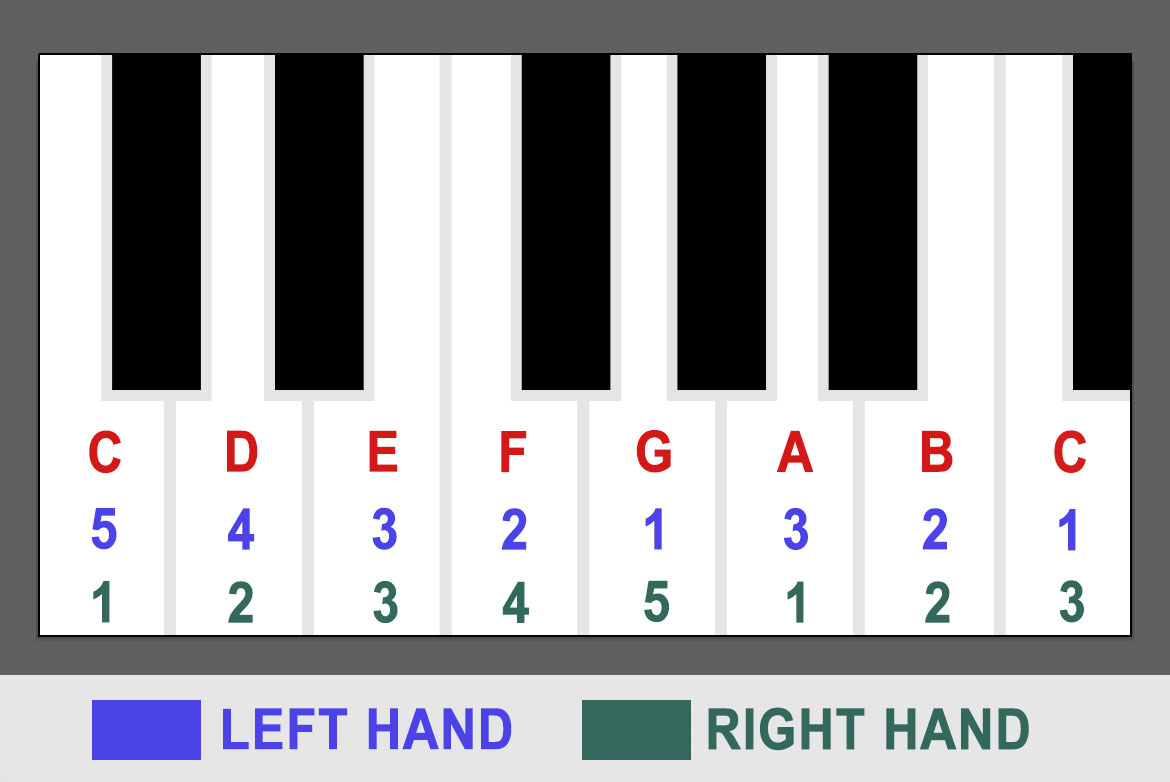


Piano Scales Complete Guide With Examples
/L1_bass_reading1a-56a72ed73df78cf772931b53.jpg)


Piano Fingering For The Left Hand



Pin On Ans Piano
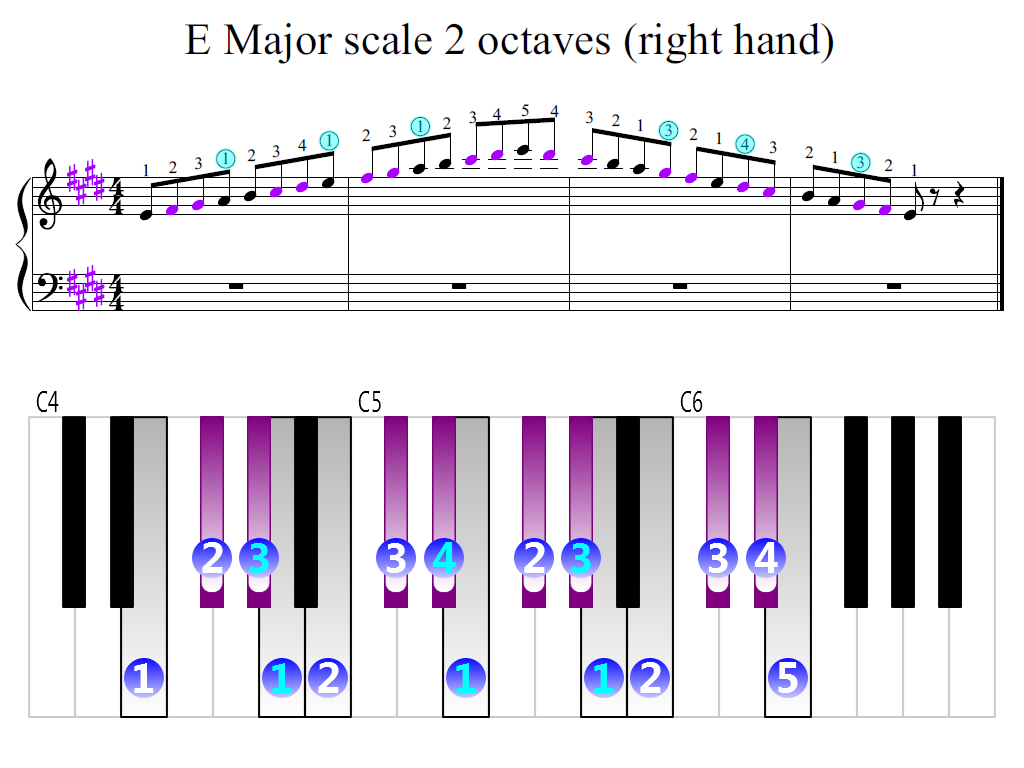


E Major Scale 2 Octaves Right Hand Piano Fingering Figures



E Flat Major Scale Piano Left Hand Youtube



How To Play Left Hand Scales On The Piano Or Keyboard Dummies



Fingering For Eb Major In Double Thirds Piano Music Practice Theory Stack Exchange
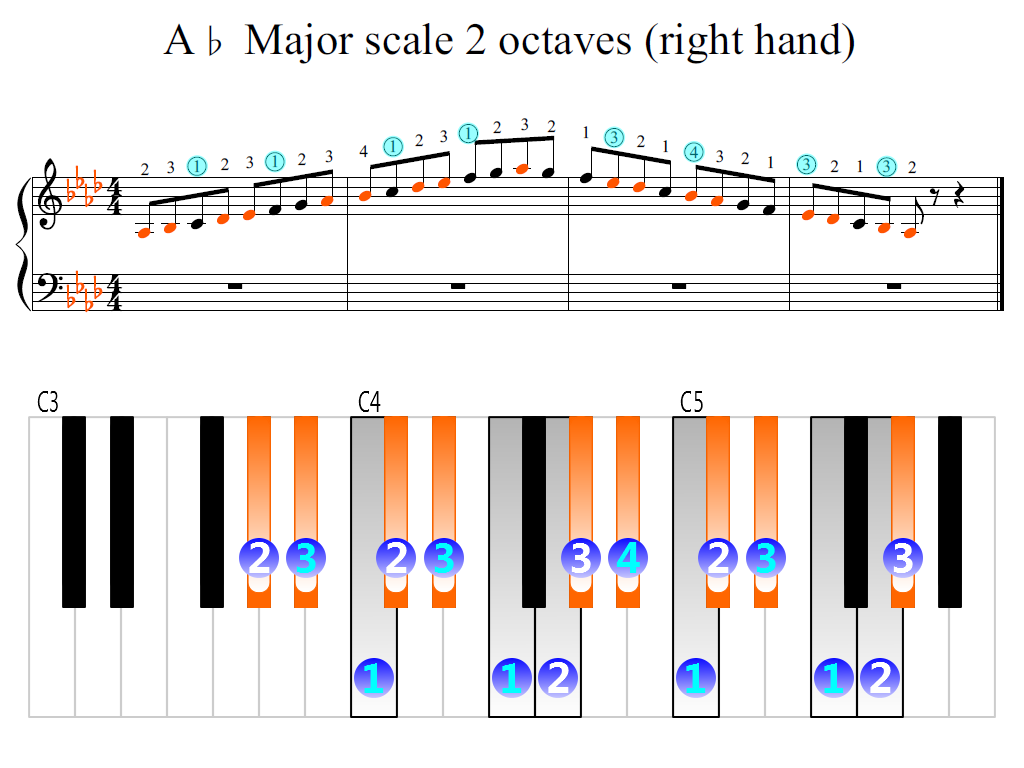


A Flat Major Scale 2 Octaves Right Hand Piano Fingering Figures


The F Major Scale On Piano



Piano Music Scales



E Flat Major Scale 1 Octave Right Hand Piano Fingering Figures


E Flat Major Chord On Piano How To Form Eb Major Chord And Scale



What Is The Proper Piano Fingering For Playing Scales In Thirds Music Practice Theory Stack Exchange



Eb Major Piano Chord Diagram Theory And Fingerings
/disabled-young-woman-playing-piano-at-home-904516326-5c6207bbc9e77c000159c92d.jpg)


Ascending Piano Scales Piano Finger Techniques



Grade 2 Scales And Arpeggios My Piano Teacher



How To Play All Major Scales On The Piano With Fingerings 4 Steps Instructables


Q Tbn And9gcrkgyctiwskzbhiocwcnzwelc Xoxa94jw Gfmdmbuirgvavq Usqp Cau



B Flat Major Arpeggios Piano Hands Separately And Hands Together Youtube



Are These Standard Piano Fingerings For The Blues Scale Music Practice Theory Stack Exchange



All Major And Minor Scales Including Fingering For Piano Oktav


Why Is Major Scale Called Major And Minor Scale Called Minor In Music Do The Scales Have An Emotion Attached To It Like In Indian Music Ragas Quora



Jazz Piano Basics Practice Guide Pdf Practice Plans



How To Play The E Flat Major Chord Eb On Piano And Keyboard Youtube


Q Tbn And9gcr Hx9e42xzhzsgplnkrngbmsxkhavlb1ahkpeyjwqai Cg7lm Usqp Cau


コメント
コメントを投稿